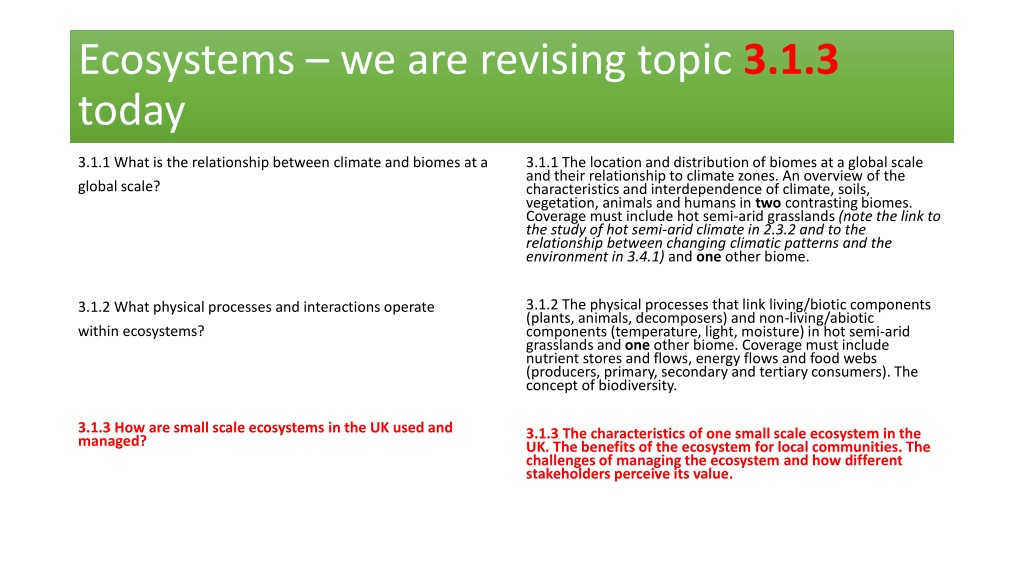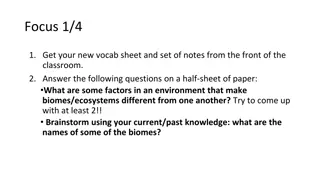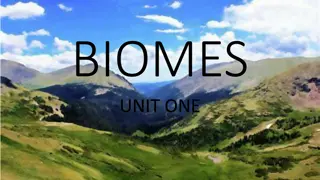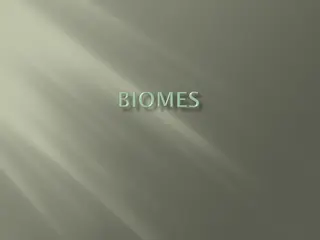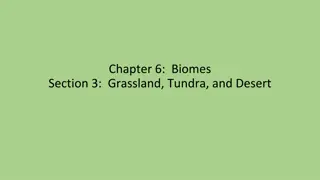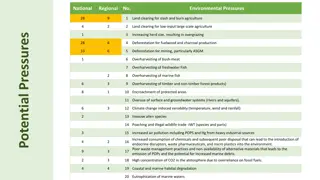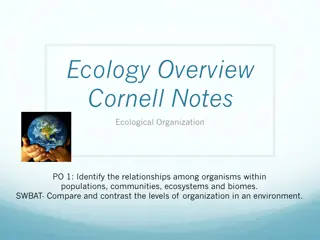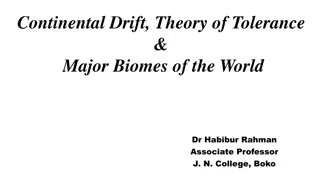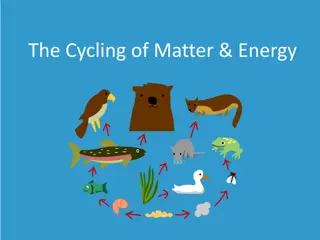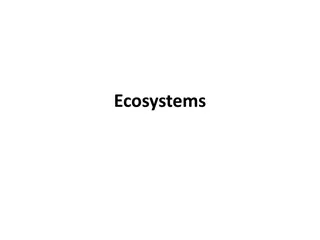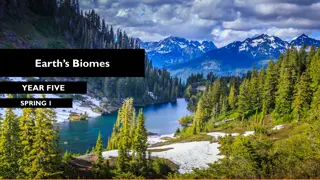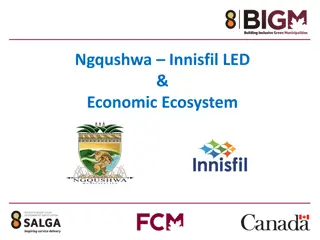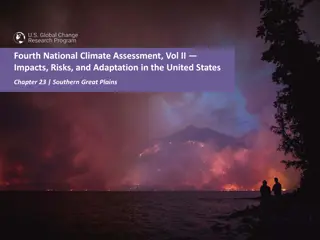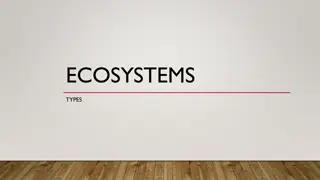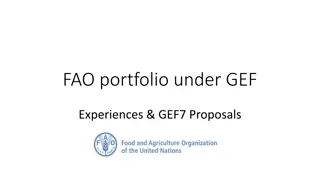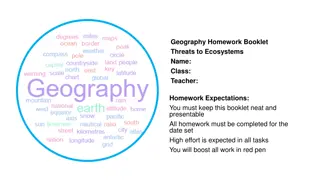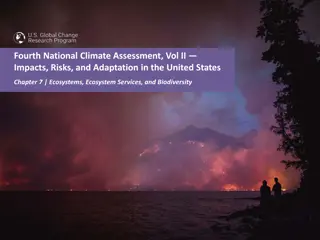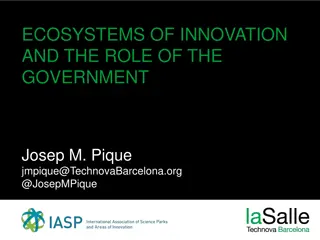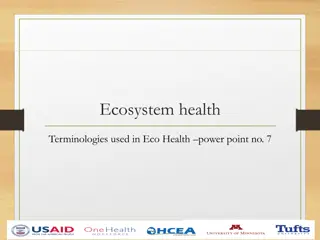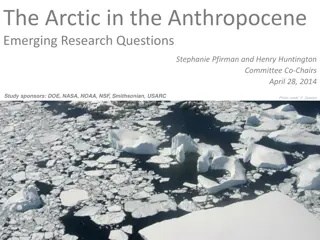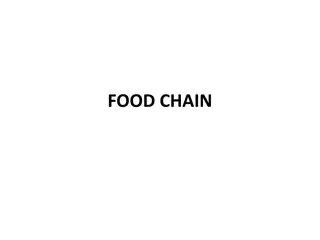Understanding Ecosystems: Climate, Biomes, and Management
Explore the relationship between climate and biomes on a global scale, focusing on hot semi-arid grasslands and one other biome. Learn about the physical processes linking living and non-living components in ecosystems, such as nutrient cycles and food webs. Discover how small-scale ecosystems in the UK are utilized and managed, with a specific look at Sand dunes and their benefits, challenges, and stakeholder involvement.
Download Presentation

Please find below an Image/Link to download the presentation.
The content on the website is provided AS IS for your information and personal use only. It may not be sold, licensed, or shared on other websites without obtaining consent from the author. Download presentation by click this link. If you encounter any issues during the download, it is possible that the publisher has removed the file from their server.
E N D
Presentation Transcript
Ecosystems we are revising topic 3.1.3 today 3.1.1 What is the relationship between climate and biomes at a 3.1.1 The location and distribution of biomes at a global scale and their relationship to climate zones. An overview of the characteristics and interdependence of climate, soils, vegetation, animals and humans in two contrasting biomes. Coverage must include hot semi-arid grasslands (note the link to the study of hot semi-arid climate in 2.3.2 and to the relationship between changing climatic patterns and the environment in 3.4.1) and one other biome. global scale? 3.1.2 The physical processes that link living/biotic components (plants, animals, decomposers) and non-living/abiotic components (temperature, light, moisture) in hot semi-arid grasslands and one other biome. Coverage must include nutrient stores and flows, energy flows and food webs (producers, primary, secondary and tertiary consumers). The concept of biodiversity. 3.1.2 What physical processes and interactions operate within ecosystems? 3.1.3 How are small scale ecosystems in the UK used and managed? 3.1.3 The characteristics of one small scale ecosystem in the UK. The benefits of the ecosystem for local communities. The challenges of managing the ecosystem and how different stakeholders perceive its value.
Sand dunes: a small scale ecosystem 5 a day 1. What is the word for a large scale ecosystem? 2. What does flora and fauna mean? (get your answer in the right order) 3. What is a primary consumer? 4. What is an omnivore? 5. What is the name of the area where we studied a sand dune ecosystem? Answers: 1. Biome 2. Plants and animals 3. Something that eats plants. It s the same as a herbivore 4. An animal that eats both plants and other animals 5. Studland in Dorset
Three parts to this revision 1. What are the characteristics of a sand dune ecosystem? 2. How do they benefit local communities? 3. What management issues are there for looking after sand dune ecosystems? Revision Task: Read through p.240-241 and answer q.3 (make sure you know the answers to q. 1 as well but you don t need to write them down) If time you can watch this as well
Three parts to this revision 1. What are the characteristics of a sand dune ecosystem? 2. How do they benefit local communities? 3. What management issues are there for looking after sand dune ecosystems? Revision tasks: 1/ Name as many stakeholders for the Studland sand dune ecosystem 2/ For 4 or 5 of them write down how the sand dunes may benefit them. 3/ Read pages 244-45. Answer q 1 but also include how the stakeholders you listed may be affected by each management strategy
